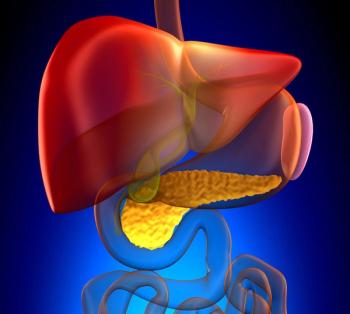
Oncology NEWS International
- Oncology NEWS International Vol 18 No 2
- Volume 18
- Issue 2
Adjuvant taxanes: Is benefit due to more cycles or addition of taxane?
The studies presented at SABCS 2008 regarding adjuvant taxane schedules are well designed and add to a growing body of data on how best to use these drugs, although they leave some questions unresolved. NSABP B-30 nicely controlled for number of cycles of treatment. All patients received four cycles of doxorubicin and four of docetaxel (Taxotere), and some got four cycles of cyclophosphamide, so there was some control over the duration of exposure and total number of doses for each drug.
The studies presented at SABCS 2008 regarding adjuvant taxane schedules are well designed and add to a growing body of data on how best to use these drugs, although they leave some questions unresolved. NSABP B-30 nicely controlled for number of cycles of treatment. All patients received four cycles of doxorubicin and four of docetaxel (Taxotere), and some got four cycles of cyclophosphamide, so there was some control over the duration of exposure and total number of doses for each drug.
NSABP B-30 showed, as we would have predicted and indeed have shown previously, that sequential therapy is better. This immediately takes us back to the debate started by CALGB 9344 and NSABP B-28 (which evaluated AC with and without sequential paclitaxel): Are more cycles of therapy better than fewer, or is it really the addition of the taxane that provides benefit?
This study partially addresses this question because all patients received four cycles of docetaxel (sequentially or in combination) and four of doxorubicin; the eight-cycle regimen was superior. However, the reason the latter was superior could be either that it involved more cycles of therapy or that it delivered the highest doses of docetaxel.
Indeed, the sequential single-agent docetaxel dose in B-30 was higher (100 mg/m2) per cycle than on the combination arms, and we know that docetaxel has shown a dose-response relationship. While many clinicians may attenuate the dose, using 100 mg/m2 as a single agent may have produced the advantage seen, compared with the combination, which employed a lower dose (60 mg/m2).
For clinicians, it is important to note that this study did not evaluate TC (an anthracycline-sparing regimen). It does suggest, however, that TC may be inferior to the best third-generation regimens, since the AT arm in B-30 was inferior. Again, the dose of docetaxel was lower here (60 mg/m2).
The BCIRG 005 trial of ACT vs TAC bumped TAC up to six cycles and found equivalence for sequential vs combination treatments. This is consistent with the view that total exposure may matter and that a six-cycle regimen (as compared to four) may compensate for the use of slightly lower doses (75/50/500 mg/m2). Interestingly, this too was seen years ago in the moderate and higher dose arms of CALGB 8514 (CAF 600/60/600 mg/m2 - 4 vs 400/40/400 mg/m2 - 6). Finally, the EC-Doc result is reflective of and consistent with the data we have had for years, showing that, in general, the addition of a taxane is associated with an improved outcome.
Other schedules
While helping us optimize taxanes, the studies did not evaluate other schedules found to be effective in other trials, in particular AC followed by paclitaxel (P) given every two weeks (dose-dense therapy), which produced a statistically significant advantage over AC†’P every three weeks.
Also noteworthy is that ECOG 1199, the largest direct comparison of doxorubicin/taxane schedules, suggested that the best regimen was AC followed by paclitaxel given weekly. This raises the question of whether these latest results are really pointing us toward dose-dense paclitaxel as the optimal choice. At the moment, it is not clear that we should be going in any other direction.
Meta-analysis
While there are nuanced differences among these regimens, we can be sure from the meta-analysis by Michele De Laurentiis, MD, PhD, that adding a taxane is better than not. Disease-free survival events were reduced by 17% (P < .00001) and mortality by 15% (P < .00001), with absolute five-year risk reductions of 5% and 3%, respectively, when taxanes were incorporated into anthracycline-based regimens (J Clin Oncol 26:44-53, 2008).
As reported at SABCS 2008 (abstract 707) and in the JCO paper, the DFS benefit was independent of estrogen-receptor expression, degree of nodal involvement, type of taxane, age, menopausal status, administration schedule, and (where available) HER2 status.
In conclusion, high-risk patients should receive taxanes, and most should receive sequential treatment after an anthracycline, taking into careful consideration the issues discussed above.
Articles in this issue
almost 17 years ago
Consortium advances multidisciplinary program for colon canceralmost 17 years ago
Celator joins leukemia society for phase II trial of CPX-351almost 17 years ago
Genzyme nabs FDA approval for stem cell mobilizing agentalmost 17 years ago
FDA launches pilot safety program for foreign drugsalmost 17 years ago
Radiation oncology society adopts new monikeralmost 17 years ago
Varian places RT units; offers storage systemalmost 17 years ago
Improvements in Pap screenings proposedalmost 17 years ago
New outlook for neuroendocrine canceralmost 17 years ago
Mismatched cord blood stem cells meet need for urgent Rx in acute leukemiaNewsletter
Stay up to date on recent advances in the multidisciplinary approach to cancer.














































































